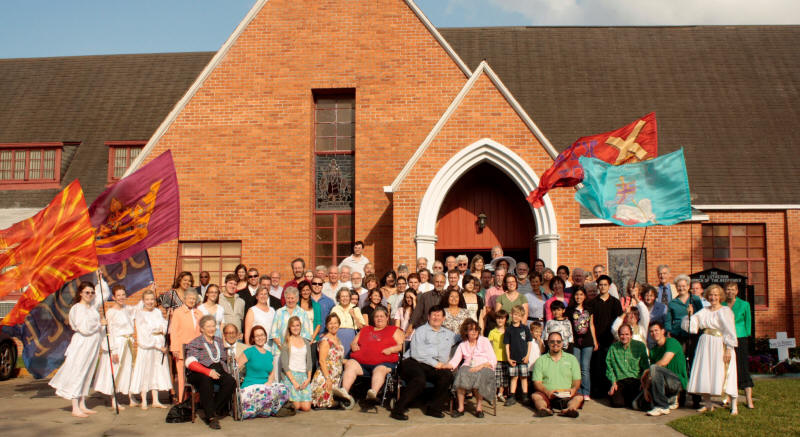|
Damage & Decisions Leading to Building Closure
back to Redeemer Final Weekend
To understand the twin "seeds of destruction" that damaged the HVAC
system for the complex at 200 Telephone, and spalling of concrete from the Education
building, here is a primer on how these were constructed.
Important to note that building design decisions in the 1930s predated
the availability of commercial air-conditioning.
Heating and Ventilation
The HVAC system was installed in the basement under the Parish Hall
built in the 1930s, not in the basement of the new sanctuary built in
the early 1950s which replaced the World War 1 era original church. The
Parish Hall basement had ventilation inlets at street level, raised
above sidewalk level. Unfortunately, when Tropical Storm Allison struck
in 2001, the water level in the streets was deepest on record, and the
basement flooded to a depth of four feet. Since then, those air inlets
have been sealed, so the only air comes through the HVAC system.
Insurance replaced the Parish Hall floor,
and refurbished the Sanctuary basement level, but unfortunately the HVAC
system - which was still able to run after being flooded - was not
replaced. During 2007 through 2009, parts of the HVAC system started to
fail, and Vestry spent significant money rebuilding compressors,
replacing a plugged heat exchanger, repairing electrical controls,
installing new chemical treatment and replacing
cooling tower.
Education Building Spalling
The concrete mix used in the 1930s did not have benefit of the knowledge
of what causes spalling, and so this entire building became subject to
spalling of concrete as rebar rusted and expanded. It was exacerbated by
lightning strikes to the bell-tower, which when discharging to ground
turned water to steam, and which blew off a huge chunk in June 2007
breaking a beam in the parish hall roof,
repaired under
insurance including rebuilding the entire parapet in lightweight
materials.
The multi-year vestry project to install
cellular antennas in the tower parapet was about more than just a
steady revenue stream, or improved cellular signals. T-Mobile also
agreed to install a lightning-strike protection system which harmlessly
grounds a strike through a new thick conductor, this minimising strikes
on the tower's concrete. But prior cracks continued inexorable rusting,
and by the time the church closed there was wooden protective walkways
to shield from falling chunks.
Diocesan Role in Decisions
In late 2010 through early 2011,
the Diocese did a Facility
Assessment - this was reported earlier in the
Requiem page created when this website was
set up after the final weekend
25-27 February 2011. The sober conclusion was that it could take
millions to do all repairs. When combined with a
Congregational Assessment
done in 2005, and a 2009 update on
membership and finances, the
conclusion was that the current congregation could not sustain
operations in those facilities.
The Senior Warden provided two
congregational letters summarizing the situation, first
assessment entitled "For I Know The
Plans I have For You" in Dec 2010, then the
Requiem letter. The Diocese
offered four options: 1) mission
status, (2) diaspora (dissolve the congregation and everyone go wherever
each one chooses), (3) become a house church, and (4) lease the vacant
building of the Santa Cruz mission.
Congregation ultimately chose NOT to move
four miles to then-vacant mission church at 710 Medina near Brady's
Landing, but instead to become a Sunday afternoon congregation in a
nearer Redeemer Lutheran church at 5700 Lawndale, just a mile and a half
away. They meet there to this day: see
www.RedeemerHouston.org

Episcopal Church of the Redeemer-2014 in annual Pentecost photo.
Taken outside of the Evangelical Lutheran
Church of the Redeemer
 |

